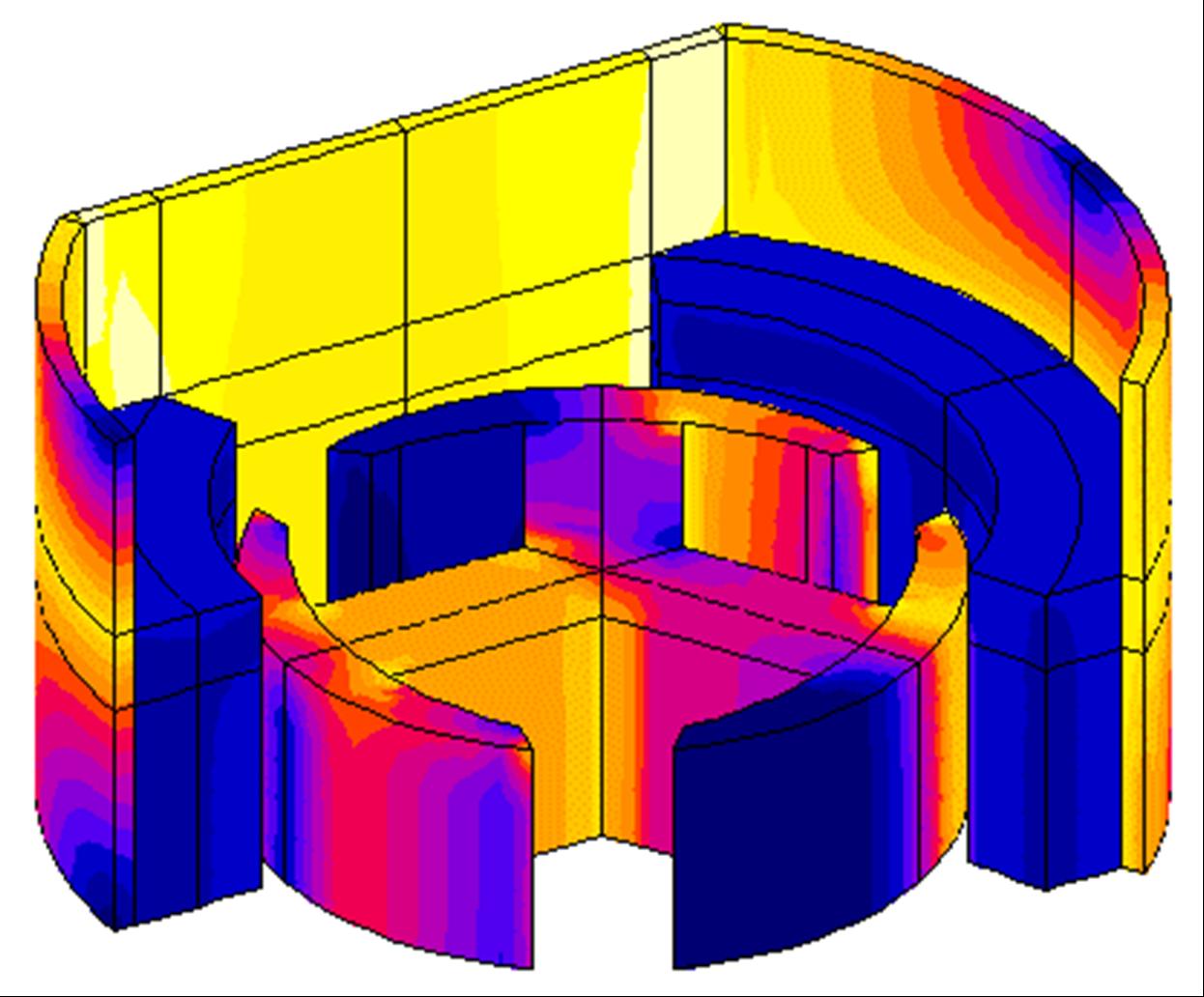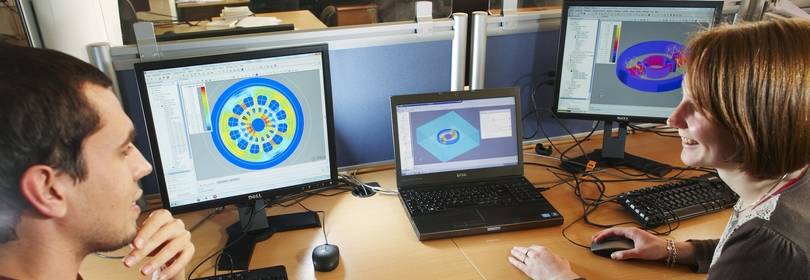Since 2000, 3D electromagnetic finite element method has been considerably improved with
- the widespread use of magnetic scalar potential and electric vector potential formulations
- the computation of source field
- the automatic introduction of cuts in magnetic circuits not simply connected
- the use of edge approximations in the massive conductive regions.
These formulations appear to be an efficient and economical alternative to traditional solutions using the magnetic vector potential, allowing the simulation of complex devices, combining movement, nonlinearities, coupling circuit and eddy currents, which were previously inaccessible. In addition, the formulations of scalar potentials are especially suited to treat thin and line regions and to take into account the infinite. All these new features arenow integrated in the FLUX software.

3D modeling of the motion of an electrical machine (Cedrat)
Currently, running researches are dealing with the consolidation and expansion of possibilities offered by these new formulations. These include in particular:
Currently, running researches are dealing with the consolidation and expansion of possibilities offered by these new formulations. These include in particular:
- Formulations in high frequencies, to simulate power electronics devices (passive components in particular) or for MEMS,
- Coupling the finite element method with other complementary methods such as PEEC method (project with the Power Electronics team of the lab)
- Adaptation of 3D formulations to model the movement of solid conductor which requires mesh adaptation technique,
- Adaptation of linear and nonlinear solvers to new systems of equations,
- Study of geometric symmetries even with a lack of physical symmetry, in the context of reducing the size of systems of equations to solve.
- Circuit-coupled T0-phi formulations with surface impedance conditions and thin regions.


